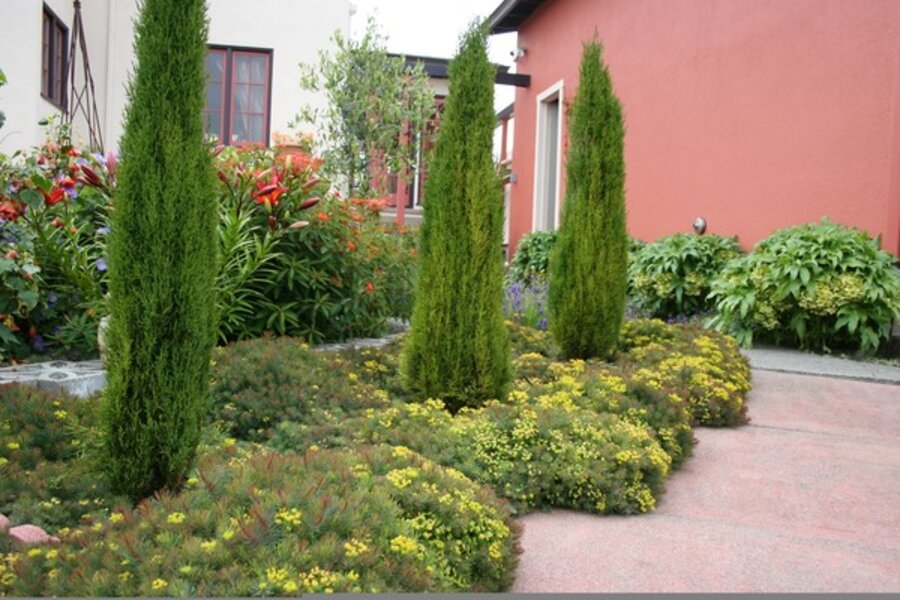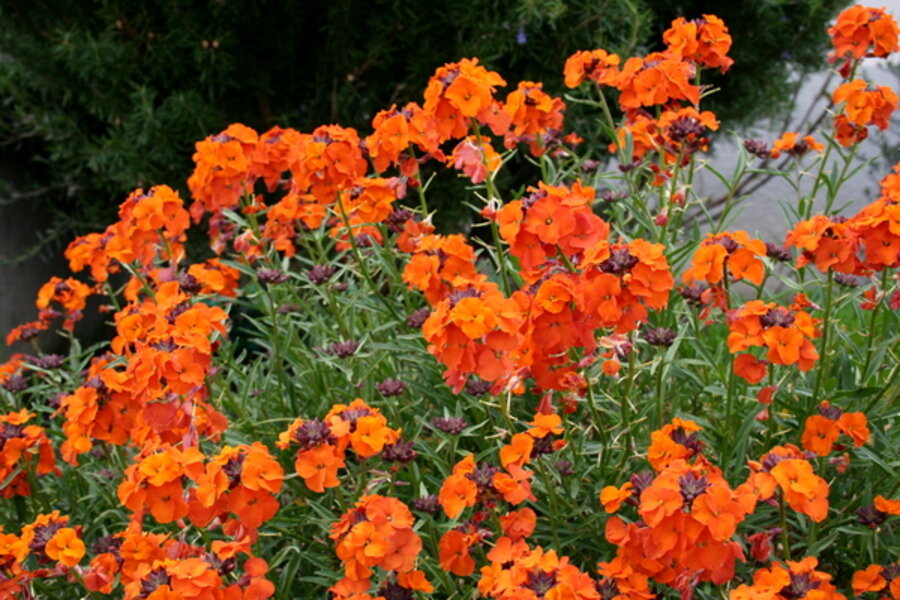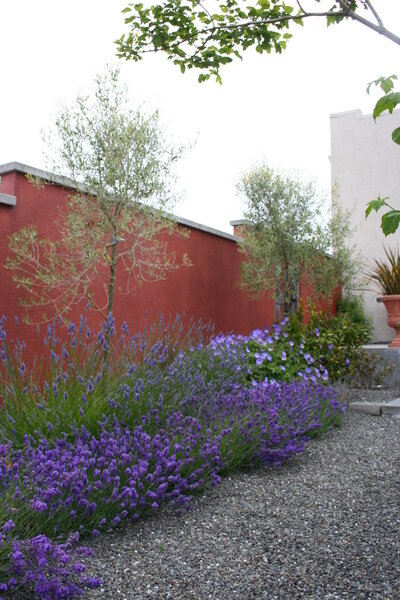For a waterwise landscape, consider Mediterranean garden design
Loading...
Many in California and elsewhere are looking for inspiration in creating a gorgeous, low-water landscape, and the traditional Mediterranean garden provides ample ideas for those with a sunny garden and good drainage.
If you've seen the bold, lavender-lined gardens of Tuscany in books and magazines, you may have wondered how to get the look in your own space.
A Mediterranean garden design incorporates a number of iconic elements, such as the terra-cotta hue of the hardscaping and paint, the grayish-green foliage of so many Mediterranean plants, and the vase-shaped pots with bold flowers spilling from them.
One of the strongest elements, however, is a reliance on traditional Mediterranean garden plants. Olives, lavender and other herbs, and Italian cypress mix with other boldly colored garden plants to create the feeling of warmth in Tuscan gardens.
If you're interested in creating a Mediterranean-inspired garden, here are some traditional plants to choose from, as well as some other waterwise plants that harmonize well with this style.
Mediterranean herbs for fragrance, color
Lavender, wormwood (Artemisia), sage, lavender cotton (Santolina), rosemary, oregano, and thyme all make excellent additions to a Tuscan-style garden. Because their foliage releases scent when they are brushed against, they can make an excellent planting for along a pathway or near a seating area.
The grayish-green foliage of many of these herbs harmonizes well with olive trees, and the cool purple-blue tones of many of the flowers contrasts nicely with the warm hues used in so many Tuscan garden designs.
When using Mediterranean herbs, don't be afraid to go bold or formal in your design. It takes courage to plant 50 lavender plants along a pathway, but the effect will be well worth it. Likewise, formally flanking an entry with matching rosemary plants takes a bit of forethought, but strong design statements like these make the rest of your garden seem like part of a larger theme.
Italian cypress spires punctuate the garden
The tall spires of Italian cypress provide a sense of order and formality to a tumbling, exuberant garden.
Dwarf varieties such as 'Tiny Towers' can be placed in pots to highlight a patio or entry, or they can line a pathway and lead your eye toward the next view. Large varieties of Italian cypress can make excellent screens toward the periphery of the landscape.
However, the drawback to using Italian cypress is they are suited only to climates with summer heat (and realtively low humidity). In my cool, rainy climate, they last just a few years before turning brown and sad.
If you live in a cool-summer climate, try these substitutes, which will provide a tall, slender spire in the garden:
Juniperus scopulorum ‘Skyrocket’
Thuja occidentalis ‘Emerald’
Buxus sempervirens 'Graham Blandy'
Ilex crenata ‘Sky Pencil’
Liriodendron tulipfera 'Fastigiatum'
Podocarpus gracilior
Bold flowers add interest
Strong flower color is another integral part of a Mediterranean garden design. Orange and apricot hues are an excellent foil to the blue-purple flowers of lavender, rosemary, sage, and other Mediterranean herbs.
Sun rose (Helianthemum) is a cheerful low-water ground cover for Mediterranean-type gardens. Even when not in bloom, the foliage -- in gray to green -- looks great with other Tuscan plants. 'Cheviot', 'Henfield Brilliant', and 'Orange Surprise' are all in the right color range and are prolific bloomers in summer.
Spurge (Euphorbia) varieties are another excellent addition to a Mediterranean theme. Because their foliage colors range from blue-green to medium green, and their flowers add dashes of lime green or fiery orange-red, they harmonize beautifully with the cooler tones of so many Mediterranean plants. Try 'Red Wing', 'Fireglow', and the ground cover variety E. cyparissias for bold color and a billowing form.
Wallflower (Erysimum) is a fragrant flowering plant for the Mediterranean garden. While wallflower can be short-lived (lasting around four years in most gardens), they grow quickly to two to three feet around and bloom prolifically even in their first season. Try 'Fire King', 'Orange Bedder', 'Apricot Twist', and 'Poem Mirabelle' for a rich orange addition to the garden.
Native plants can also be a waterwise addition to a Mediterranean garden theme. The key is in selecting natives that are well-adapted to your area and can naturalize easily in your garden. For my area, the cheery orange flowers of California poppy, monkeyflower (Mimulus), and leopard lily (Lilium pardalinum) shine with this garden theme.
You can see how choosing just a few bold colors of plants can help you keep to a Mediterranean theme without feeling constrained to just a few types of plants.
When you refine your color palette to a few shades, you'll be surprised to find how many different types of plants can fit seamlessly into your garden theme. This allows endless room for creativity and making your garden your own.
-----
Genevieve Schmidt is a landscape designer and garden writer in the redwoods of northern California. She shares her professional tips for gardening in the Pacific Northwest at North Coast Gardening and on Twitter. To read more by Genevieve here at Diggin' It, click here.








